Let’s return to the very dawn of the third millennium and take a moment to remember the Porsche Carrera GT, a proto hypercar of a past so distant yet so close. Now, think of its Italian antipode, the Ferrari Enzo.
Both of the sports cars defined the era of ultimate road performance, and both proudly displayed prancing horses on the hood, yet they were completely different.
While the Enzo was tight, tense, passionate, and dramatic, it seemed that the Porsche Carrera GT possessed a strong dose of understated elegance. But was it like that really?
We’re here to dig deep into the history and engineering behind the last maverick supercar, the sublime and unforgiving Carrera GT.
Background
To understand Porsche Carrera GT’s roots, we must travel back to the 1990s, a game-changing period for Porsche as a production car manufacturer and racetrack royalty.
The Stuttgart-based company was still recovering from the losses caused by the 959’s stratospheric development costs. Still, the latter part of the decade brought much-needed changes in the form of a new entry-level car, the 986 Boxster, and the first thoroughly re-engineered 911, the 996 Carrera.

On the tracks, the rise of the GT1 class gave birth to the 1996 911 GT1, a full-on race car very loosely based on the 911. Due to homologation purposes, Porsche was obliged to build a limited number of street-legal cars, thus presenting the world with its second supercar, albeit built-in low double digits.
When it came to top-tier racing, Porsche was in a unique position. It was a back-to-back Le Mans winner in 1996 and 1997, but not as a factory team, nor in a car, it officially backed. Tom Walkinshaw Racing built the Le Mans-winning WSC-95 on Jaguar XJR-14 chassis with a 3.0-liter Type 935 flat-6, and it was originally built for the IMSA.
As the regulations for 1995 changed, the Le Mans prototype sat unused until Joest Racing’s Reinhold Joest convinced Porsche to let him repurpose the car for LMP1 class, subsequently winning in 1996 and 1997.
Motivated by Joest’s success, Porsche redeveloped this car into the Porsche LMP1-98, which flopped in 1999 after both Le Mans entries retired, giving way to the pair of Porsche 911 GT1-98 cars to take the top two spots on the podium.
Now, this is where the Carrera GT’s complex backstory gets really interesting. It’s an almost forgotten fact, but Porsche was a Formula 1 engine supplier for Arrows Grand Prix, a British team renamed to Footwork in the 1991 season. The same year, Footwork ran a Porsche-built 3512 3.5-liter V12.
For the 1992 season, Footwork approached Porsche to develop a new V10 unit, but as the team ultimately made a switch to Mugen-Honda V10, the project was shelved.
Six years later, after the 1998 Le Mans triumph, Porsche commenced developing the Porsche 9R3 project, a further evolution of the LMP1-98 under the new 1999 rulebook. Engineers at Weissach used this opportunity to bring back the dormant 3.5-liter V10 design, increasing its displacement to 5.0-liter and 5.5-liter, respectively.
To avoid competition within the VW Group’s stablemate Audi and its R8 Le Mans LMP1 prototype, the 9R3 or LMP2000 eventually didn’t race, but the 68° 40-valve naturally-aspirated V10 engine soon saw another use.
Development
To celebrate entering the new Millenium as a successful and financially stable company, Porsche created a treat of a car for the 2000 Paris Motor Show. It was named Porsche Carrera GT, a beautiful mid-engined Targa top with a clean-cut and modern design and the fabled 558-horsepower 5.5-liter V10.

The prototype-turned-supercar concept had one of the most grandiose reveals ever seen at the Paris Motor Show, with Walter Röhrl driving it from the Arc de Triomphe through the Champs-Élysées and to the Louvre early in the morning of 28 September 2000.
The Carrera GT was everything Porsche hoped it would be: beautiful, powerful, advanced, and audacious. Yet, despite attracting unexpected amounts of interest, it wasn’t either meant or really ready for production.

Jorge A. Guasso ©2020 Courtesy of RM Sotheby’s
Fast forward two years and Porsche had diversified its portfolio even more by presenting the Cayenne, a controversial yet commercially successful SUV. Rejuvenated, reinvented, and flushed with cash from the Cayenne and the 986 Boxster, Porsche publicly announced it would build the Carrera GT. During a press conference at the Detroit Motor Show, Porsche’s spokesperson also revealed Porsche’s plans to build this supercar in 1,000 copies.
The first Porsche Carrera GT saw the light of day in 2003, and the car stayed in production until 2006. The bespoke V10 engine was built in Stuttgart, while the final assembly was at Porsche’s newly opened factory in Leipzig, alongside the Cayenne’s production line.
During this 3-year span, Porsche produced 1,270 Carrera GTs, somewhat short of its final plans to end the production after 1,500 examples.
Chassis
A state-of-the-art car it was, the Carrera GT was built around a 9R3-derived carbon fiber reinforced polymer monocoque chassis produced by ATR Composites Group. Moreover, the renowned Italian constructor also helped develop the CFRP engine subframe too. In addition to CFRP, ATR and Porsche used H-400 steel to reinforce the windshield and support aluminum bumper railings.

Construction-wise, the crucial difference between the concept showcased at the 2000 Paris Motor Show and the production Carrera GT was that the V10 engine was put in a three-point composite subframe. In contrast, the engine was a load-bearing component on the show car.
Porsche opted for a subframe because the engine as a bearing member would transfer noise and vibrations to the cockpit, which would’ve hampered the overall driving experience. Other than that, the Carrera GT was pretty much a Le Mans prototype dressed in a sharp carbon fiber suit.
The fuel tank was positioned between the seats and the engine, both safest and optimized for performance, not affecting weight distribution due to being positioned at the center of gravity.

When the Carrera GT came out, it set a record for structural rigidity on open-top cars, courtesy of ATS Composites’ expertise in the field.
Body and Interior of the Porsche Carrera GT
Built exclusively as a Targa with a removable two-piece hardtop, Porsche Carrera GT was, in a way, a modern reinterpretation of the 550 Spyder and the 718 RSK. Harm Lagaay’s design perfectly mated elegance and drama, and just like a proper supercar should be, the Carrera GT was unapologetically athletic from every angle.

Just a glimpse into the Carrera GT’s low-slung body reveals that this hypercar was designed for optimal airflow, with large intakes in the front fascia and dramatic openings behind the doors.


These inlets provided much-needed cooling for the car’s internals while also enhancing the aerodynamic properties of the GT’s outer silhouette aerodynamic properties.
Porsche employed the company’s racing know-how on the underside, too, with a flat floor designed with ground effect in mind.
In comparison to the concept car, the production version was both wider and longer but also lower. The front fascia lost some signature details, like fog lamps integrated into the bumper, but it retained LED rear lamps and a characteristic, albeit altered, wing mirror design.

A standout design element was the engine cover with perforated stainless steel panels serving as huge air vents dispersing the heat created by the car’s potent V10.

Safe from polyurethane bumpers, the Carrera GT’s bodywork was constructed in carbon fibre reinforced polymer, contributing to the car’s low weight. The initial goal set for the vehicle was 2756 lb, but for safety concerns, the final weight was 3042 lb.
Not the first time for Porsche, but certainly in great style, the Carrera GT had an active rear wing. The floating wing activated at speeds over 75 MPH, rising 6.3 inches to increase downforce to a maximum of 880 lb.

Finally, the Carrera GT came in five colors. First and foremost, the coveted GT Silver and darker Seal Grey or Basalt Black grayscale shades.
Porsche offered the Carrera GT in two iconic 911 colors for those who wanted to make a greater impact: Guards Red and Fayence Yellow.
On top of these standard colors, customers could pick a paint-to-sample shade, meaning that some cars left the factory in other shades such as Signal Yellow, Gulf Blue, or Biarritz White.
Just as on the outside, the Carrera GT’s interior reflected Porsche’s glorious past, blossoming present and optimistic future. In the transition from concept to the production stage, the Carrera GT lost an LED instrument panel, getting a dial cluster heavily influenced by the then-current 996 911. Despite holding onto analog instruments, Porsche created the interior to be quite stunning nonetheless.

All wrapped in high-quality leather and with galvanized magnesium panels on the center console, the dashboard, and Y-shaped inserts on the door cards, this cockpit oozed luxury. But, with exposed carbon weave on the door sills, it also mirrored Porsche’s racing prowess and true DNA of this car.
Though leather-wrapped, the Carrera GT featured featherweight Kevlar Recaro bucket seats optimized for six-point harnesses, while the pedals and the co-drivers footrest were carved from aluminum.

In another move towards distilled driving sensation, Porsche replaced the multifunctional wheel from the concept car with a simplistic three-spoke design seen on the Boxster S and the 996 911.
Finally, the layered beechwood gear shift knob was a direct homage to the iconic Porsche 917. Its unusually high position prioritized hand motion from the steering wheel to the lever during gear changes.

Sadly, Carrera GT’s production ended up not having a built-in track day camera seen on the concept.
Engine and Transmission
As previously mentioned, the race-bred engine came from Porsche’s scrapped Le Mans prototype project, and as such, it was a unique unit not previously seen in any vehicle coming from Weissach. As it later turned out, Porsche hasn’t used this V10 since either.
Be as it may, the Carrera GT was powered by the longitudinally mid-mounted 5.7-liter 68° naturally aspirated V10 codenamed 980/01.

Given that the car came out heavier than planned, Porsche maintained the same power to weight ratio by increasing the displacement from 5.5 to 5.7 liters, bumping the output to 603 horsepower at 8,000 RPM and 435 lb-ft of torque at 5,750 RPM. The 980/01 V10 redlined at screaming 8,400 RPM and was mated to a 6-speed manual transmission gearbox.
With the Carrera GT shaped by Porsche’s vast motorsport experience, the 980/01 V10 featured dry sump lubrication integrated into the crankcase. This highly sophisticated system enabled the Carrera GT to withstand 2.5 lateral Gs without oil starvation.
Porsche’s engineering team went to great lengths to make this dual overhead cam, 40-valve state-of-the-art powerhouse, as light as possible.
By using titanium connecting rods and a lightweight crankcase, among other components, Porsche reduced the engine’s weight to 452 lb. Simultaneously, the aforementioned subframe enabled its low placement, resulting in an optimal center of gravity.
In a bid to further optimize and refine performance, Porsche outfitted the 980/01 with VarioCam, a variable valve timing system continuously adjusting the angle of the intake camshafts.

While the three-pedal layout was traditional and low-tech compared to the Enzo’s F1 unit, it was by no means dated because the transmission was bespoke to the Carrera GT. The transverse transmission unit was designed regarding the car’s flat underbody aerodynamics, allowing the installation of a rear air diffuser.
Further contributing to the car’s lower center of gravity was the compact 169mm Porsche Ceramic Composite Clutch, the world’s first ceramic two-plate dry clutch.
Being a trackside component repurposed for road use, this heavy-duty clutch required finesse in operation to avoid the embarrassment of stalling or, even worse, potentially dangerous rubber burning.
In terms of straight-line performance, the Carrera GT could accelerate from 0 to 60 MPH in just 3.9 seconds, reaching a top speed of 205 MPH if one’s brave and skilled enough.
Those were impressive numbers for 2003, and nearly two decades later, they are still quite as formidable today. As a complete package, the Carrera GT was a true all-around performer, setting the Nürburgring production car record at 7:32.44.
Suspension and Steering
In a car with such a strong racing DNA, the pushrod suspension with double-track control arms was engineered for optimal performance and conceptually borrowed from the 911 GT1.

The front suspension featured double forged aluminum wishbones bolted onto the chassis and stainless steel pushrods operating the springs and dampers. In contrast, the rear suspension unit had a few notable differences.
While the rear axle operated similarly, the main difference was that the wishbones were unequal and that the lower, longer wishbone was constructed in H400 tubular steel. Moreover, the lower wishbone was shaped not to interfere with the car’s underside’s aerodynamic properties.
Precise and direct steering sensation came from a power-assisted rack and pinion with the steering column bolted directly to the CFRP monocoque.
Brakes, Wheels, and Tires
Shedding weight and improving the durability of all components transferred to the braking system as well. That being said, the Carrera GT featured Porsche Ceramic Composite Brakes: 15-inch carbon-fiber-reinforced silicon carbide ceramic composite brake rotors, more durable and considerably lighter than steel discs of the same size.

Gripping the cross-drilled and ventilated discs were 6-piston calipers both front and rear, granting much-needed stopping ability to the tricky supercar.
In an era where electronics started taking over to help drivers keep ever-increasing performance under control, Porsche made a controversial decision not to include electronic systems it featured as standard throughout its range. This means that the Carrera GT didn’t have electronic stability control, but it did have a traction control system that could be switched off if the driver felt brave and skilled enough.
The car featured a staggered stance with specially designed five-spoke forged magnesium wheels measuring 19×9.5 inches front and the rear wheels measuring 20×12.5 inches.
Again borrowing from vast trackside presence to underscore the Carrera GT’s racing DNA, the ultra-lightweight wheels featured central locks marked blue for right and red for left wheels with Michelin Pilot Sport Cup 2 tires measuring 265/35ZR19 in the front and 335/30 ZR20 at the back.

Despite being the most advanced tires of the era, these Michelins could barely provide the Carrera GT with enough grip on the limit, so many enthusiasts now drive their GTs on Michelin Pilot Super Sport rubber.
Legacy
Almost two decades after the first Carrera GT rolled out from Leipzig, and it’s safe to say that this supercar still excels both as a collector and a driver’s car.
As a garage queen or a showpiece, the Carrera GT is a fantastic piece of automotive design and a car with an undisputed investment value. Still, it also provides one of the most gratifying driving experiences.

When it arrived as a production car in 2003, the Carrera GT was instantly hailed as an era-defining supercar. It crossed swords with Ferrari Enzo, the SLR McLaren, two halo cars from Porsche’s longtime rivals, as well as independent mechanical wonders like the Pagani Zonda and the Köenigsegg CCX. Given that we all fondly remember this fantastic four, it’s safe to say that Porsche hit a homerun with the Carrera GT.
Another important milestone for the Carrera GT was that it was the first Porsche supercar unrelated to the 911, either in terms of mechanics, design, or nomenclature. By taking a brave turn away from flat-6 roots, this Y2K supercar paved the way for the next one in line, the magnificent Porsche 918 spyder.
But, while the 918 was catering to a new breed of Silicon Valley billionaires, with its high-tech, environmentally aware philosophy, the Carrera GT was a raw, almost unhinged no-nonsense traditional supercar.

It was gratifying but even more challenging; it was a hypercar that could have turned on you to remind you that you got too cocky. As such, it was one of the last breaths of analog supercars, and we salute it for ending an era with a howling tune of a thoroughbred V10.


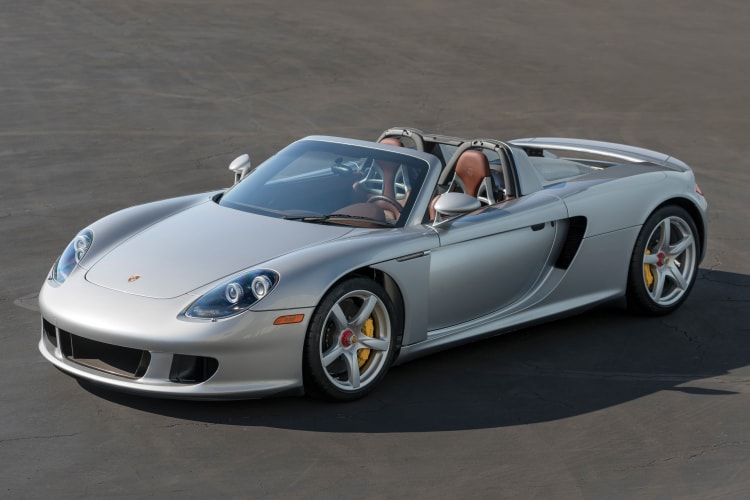

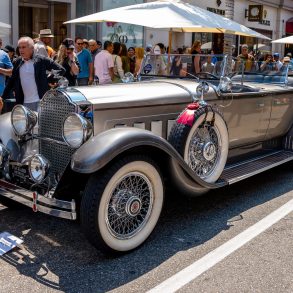
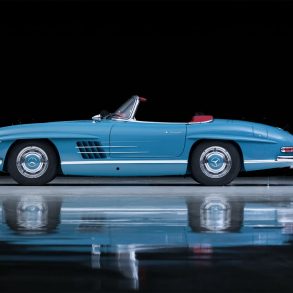
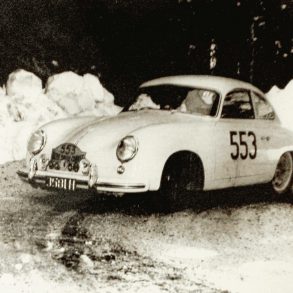
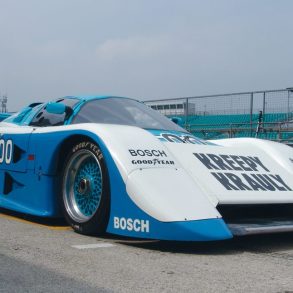
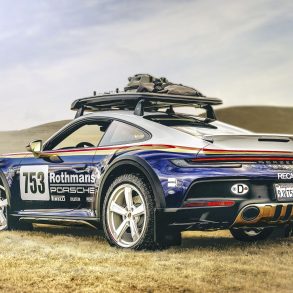
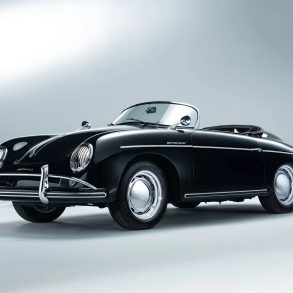

Without any doubt, new Millenium as a successful and financially stable company, Porsche created a treat of a car for the 2000 Paris Motor Show. I think this is huge.